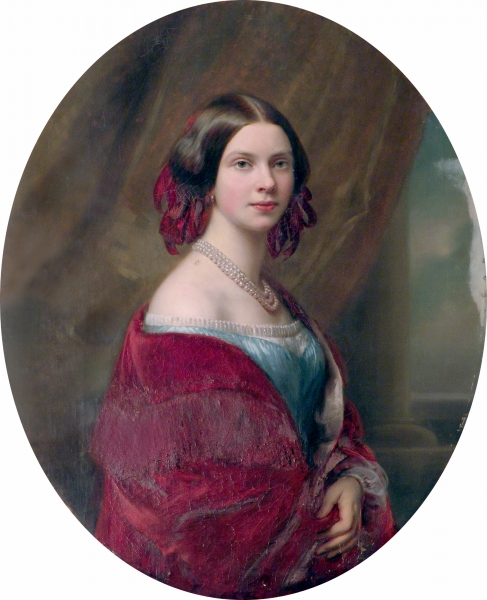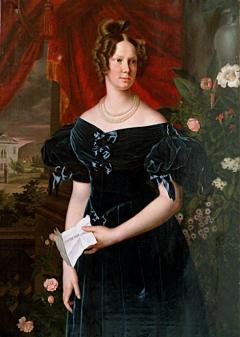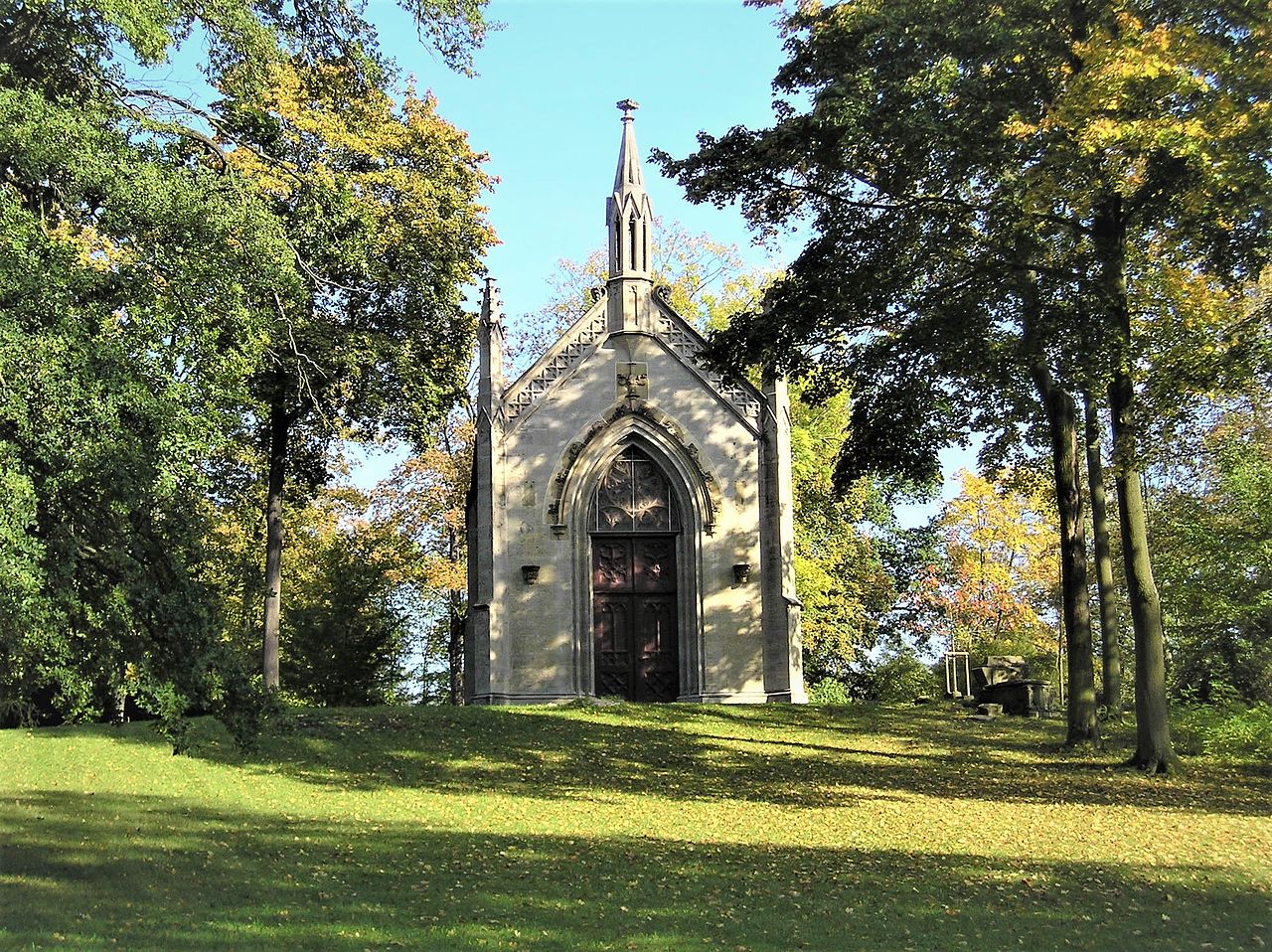by Scott Mehl © Unofficial Royalty 2018

Charlotte of Prussia, Hereditary Princess of Saxe-Meiningen; Credit – Wikipedia
Charlotte of Prussia was the first wife of the future Georg II, Duke of Saxe-Meiningen. She died eleven years before her husband’s accession. She was born Princess Friederike Luise Wilhelmine Marianne Charlotte of Prussia on June 21, 1831, at Schönhausen Palace in Berlin, Kingdom of Prussia, now in Brandenburg, Germany, the eldest child of Prince Albrecht of Prussia and Princess Marianne of the Netherlands.
Charlotte had three younger siblings:
- Prince Albrecht (1837-1906) – married Princess Marie of Saxe-Altenburg, had issue
- Princess Elisabeth (born and died 1840) – died in infancy
- Princess Alexandrine (1842-1906) – married Duke Wilhelm of Mecklenburg-Schwerin, had issue
Charlotte also had two younger half-siblings from her father’s morganatic second marriage to Rosalie von Rauch:
- Count Wilhelm of Hohenau (1854-1930) – married (1) Laura, Countess Saurma von und zu der Jeltsch, had issue; (2) Princess Margaretha of Hohenlohe-Öhringen, had issue
- Count Friedrich of Hohenhau (1857-1914) – married Charlotte von der Decken, had issue

Georg II, Duke of Saxe-Meiningen; Credit – Wikipedia
Following her parents’ divorce in 1849, Charlotte and her younger siblings Albrecht and Alexandrine were raised primarily by their aunt, Queen Elisabeth Ludovika of Prussia. By this time, the family was already on the hunt for a suitable husband for Charlotte. As a granddaughter of both King Friedrich Wilhelm III of Prussia and King Willem I of the Netherlands, Charlotte was a very wealthy, and very sought-after young woman when it came to European princes looking for a bride. But she found her match in Hereditary Prince Georg of Saxe-Meiningen. He was the son of Bernhard II, Duke of Saxe-Meiningen and Princess Marie Friederike of Hesse-Kassel. The couple became engaged while Georg was serving in the Prussian military in Berlin, and was married at Charlottenburg Palace in Berlin, Kingdom of Prussia, now in the German state of Brandenburg, on May 18, 1850. Truly a love match (although it was most certainly encouraged by Charlotte’s uncle, King Friedrich Wilhelm IV of Prussia), Charlotte and Georg shared many of the same interests and unlike many marriages of the time, both were very happy to spend as much time together as possible. They would go on to have four children:
- Bernhard III, Duke of Saxe-Meiningen (1851-1928) – married Princess Charlotte of Prussia, had issue
- Prince Georg Albrecht (1852-1855) – died in childhood
- Princess Marie Elisabeth (1853-1923) – unmarried
- unnamed son (born and died1855) – died at birth along with his mother

Charlotte with her three children, c1854; Credit – Wikipedia
Because of Georg’s military career, the family spent much of their marriage living in Berlin, where they had been given the use of the north wing of the Marble Palace by King Friedrich Wilhelm IV. They also spent time at Villa Carlotta, a villa on Lake Como in Italy, which had been a wedding gift from Charlotte’s mother, and named in Charlotte’s honor. They also made trips to Meiningen, particularly returning for the births of several of their children.
Charlotte, the Hereditary Princess of Saxe-Meiningen, died in childbirth, along with her son, on March 30, 1855, at just 23 years old, in Meiningen, Duchy of Saxe-Meiningen now in Thuringia, Germany. She is buried in the Park Cemetery in Meiningen.
Saxe-Meiningen Resources at Unofficial Royalty
- Duchy of Saxe-Meiningen Index
- Profiles: Dukes and Consorts of Saxe-Meiningen
- Saxe-Meiningen Royal Burial Sites
- Saxe-Meiningen Royal Dates
This article is the intellectual property of Unofficial Royalty and is NOT TO BE COPIED, EDITED, OR POSTED IN ANY FORM ON ANOTHER WEBSITE under any circumstances. It is permissible to use a link that directs to Unofficial Royalty.






